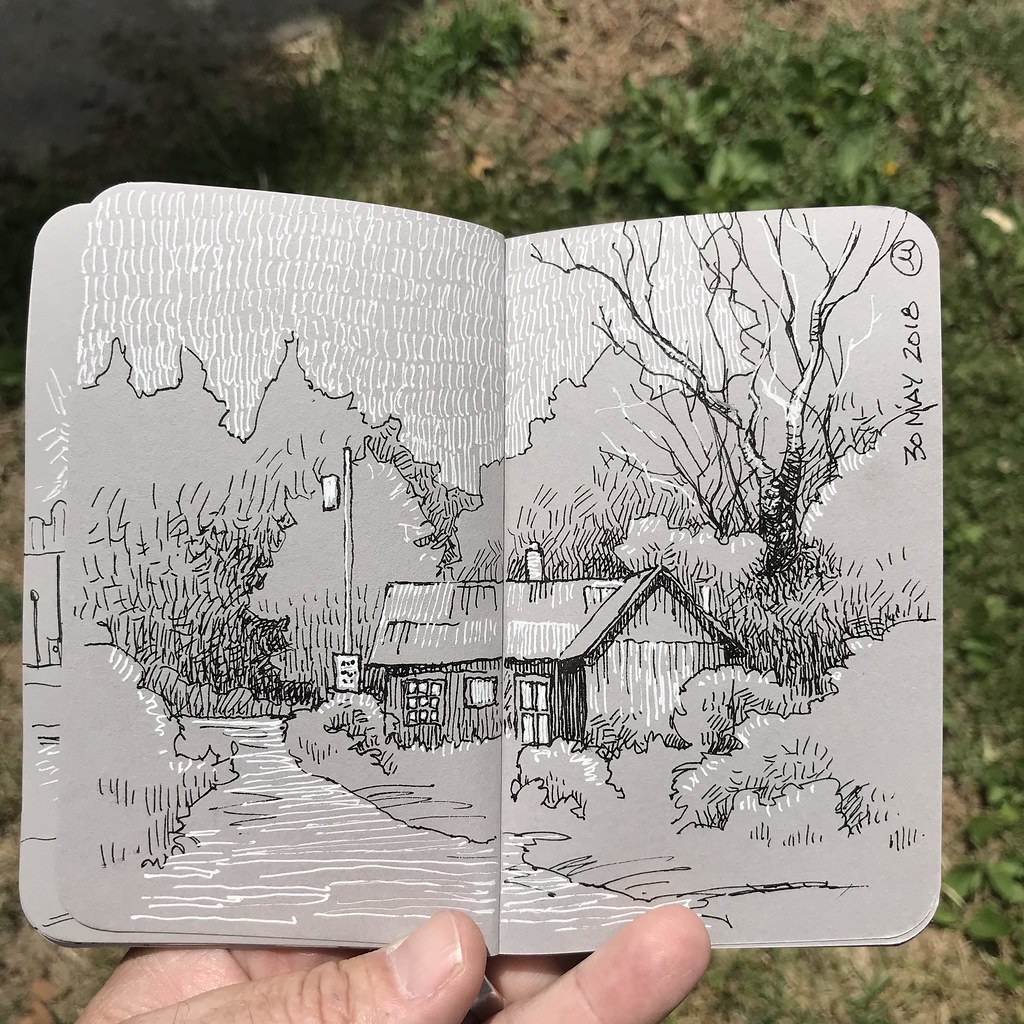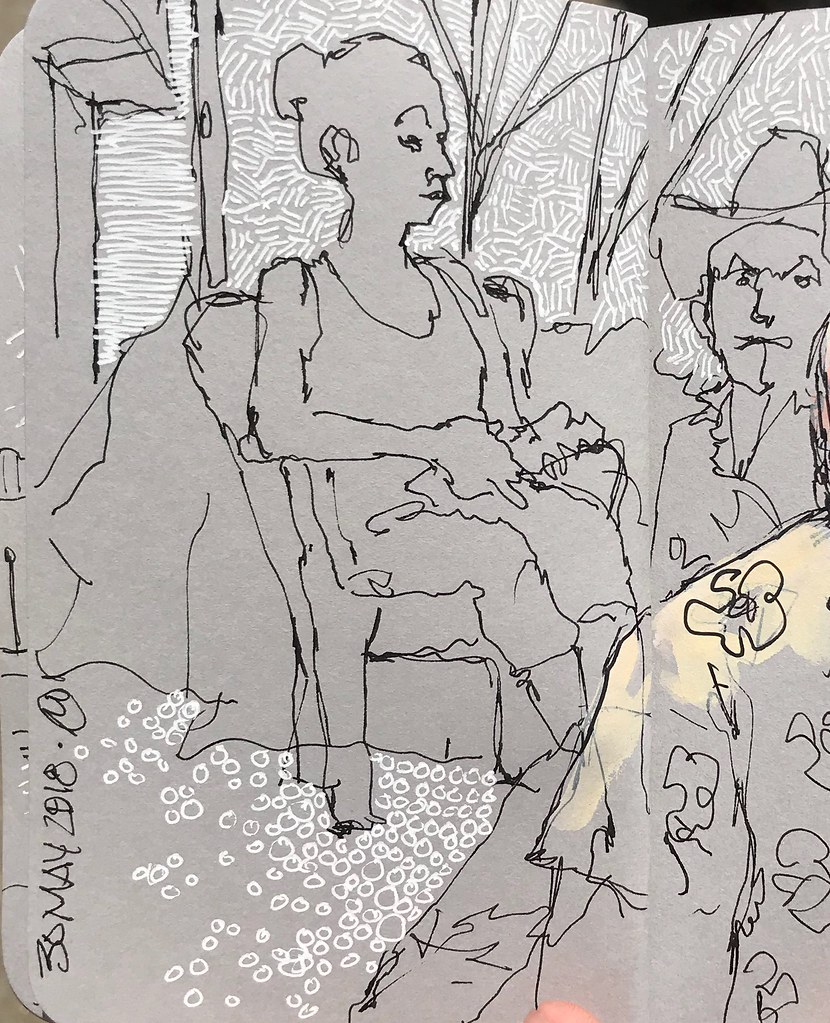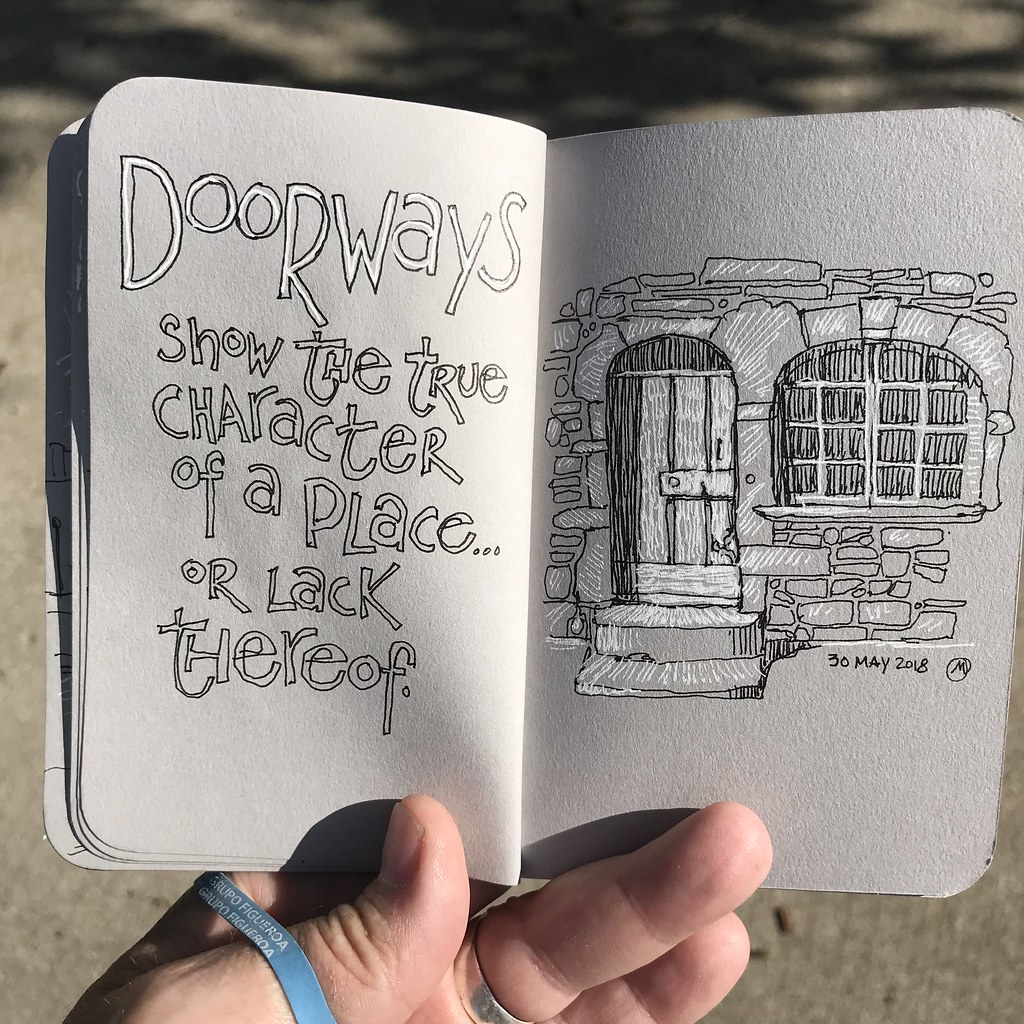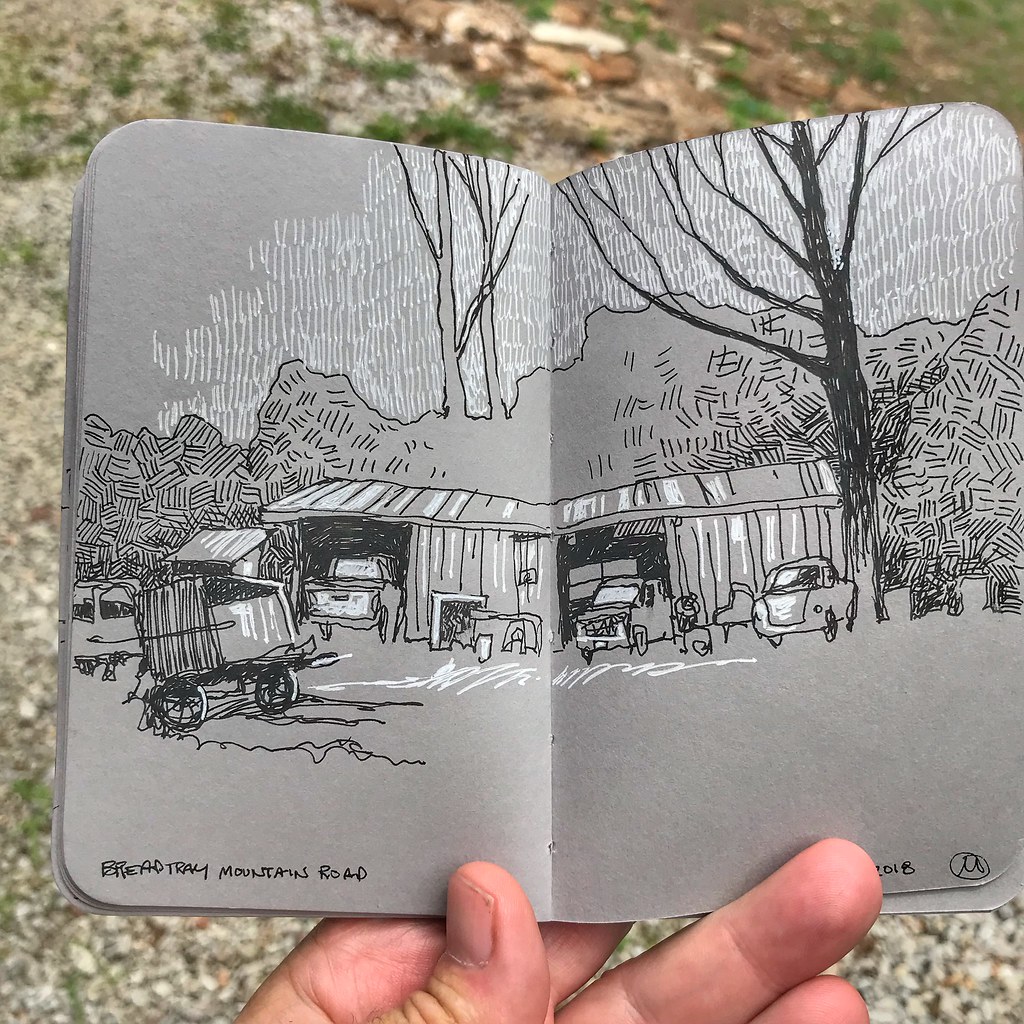Back to school

28 August, 2022.
I’ve been carrying around a small sketchbook in either a hip or shirt pocket for days now without making hardly a pencil line. We just wrapped up our first week of school, our first five days with students this year, and my focus has been on the introductory mark-making experiments I introduce to kids. Only a couple lessons in and it’s immediately clear that there are enthusiastic students in attendance who are engaging in the inventive line and fill challenges I employ to tease out skillsets. I may have more than a few visual “problem-solvers” this year. That said, at the moment I’ve not much time leftover for me or my own personal artistic interests. So the small sketchbook must suffice.

The drawings in these sketchbooks get blocked in very quickly. The page is only about three inches wide, so the sketches are necessarily little more than thumbnail studies in shape and value. I find making them very satisfying: a composition can be structured in a matter of minutes using a pencil. (It’s the ultimate in minimalistic sketching experiences.) All of the examples above were inspired by places I drive past and my return trip after a short visit to my home town.

The abstract qualities of this barn materializing from behind a hill of grasses is so simple, but I find the shapes very pleasing. I should paint color studies of it this afternoon, I think. The angle of the roof, where it abuts sky is especially interesting to my eye, and it’s all offset by the tonality of shadow present in the foreground and sides of the structure, nearly silhouettes, in fact.
My subject matter triad has primarily evolved into: Places, people in places, and things that take people places. It’s been an organic evolution, much less purposeful or planned than the early years when I felt a desperate need to develop a “style,” a look by which I might be recognized. These things enter my sketchbook relatively unbidden; they interest me and so I draw them. Sketchbooks have liberated me from a need to generate more “important” wall sized artworks. Sketchbooks are mine alone to share as I see fit.

Each time I sketch an old car or truck I think that my interest has finally run its course, that I’ll have drawn my last interesting old vehicle. But then I’ll encounter another, as I did this really vintage auto, and soon enough scribbled marks are being made.
Another sketcher has tentatively identified it as a 1919 model of a Ford. The carriage style cockpit is intriguing, with curves that are nearly Victorian in nature. It’s almost like period furnishings, don’t you think?

I’ve also been pining for an old pickup truck. Nothing exotic, you understand, just an old beater that would be useful for transporting my bikes or conveying art stuff from one school to another. Art teachers are natural hoarders, and part of my life seems to be facilitating that aspect of our collective personalities! Be that as it may, every time I encounter an old truck my interest is piqued. Sometimes I even wind up drawing them.

A lot of roads and paths seem to wind up in my sketches. I think it’s partly due to the naturally graphic quality, and I like the way those elements can be used to literally lead the eye in and around and through a drawing. But formalistic qualities aside, there’s also a narrative thing happening with a road: Where does it come from? Where does it go? Like a story, there’s a beginning, a middle, and an end.











































